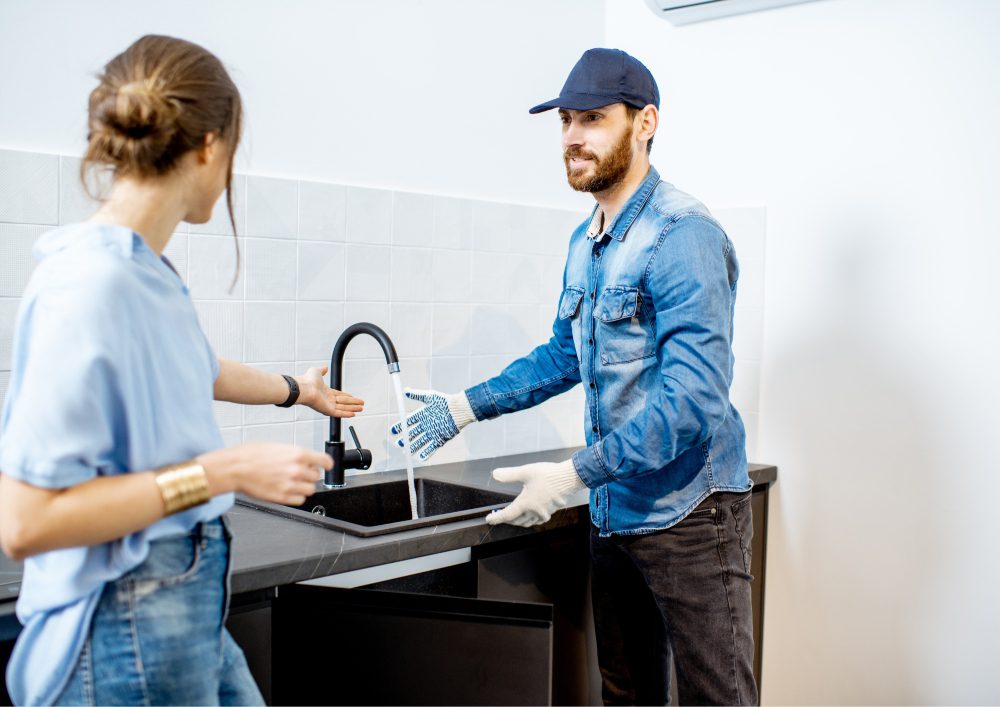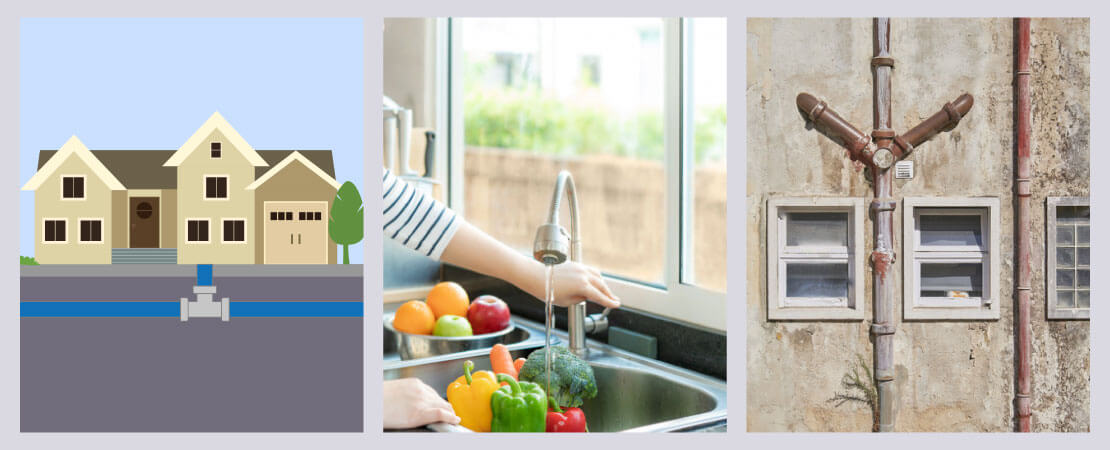Discovering the Fundamentals of Home Plumbing: A Beginner's Tutorial
Discovering the Fundamentals of Home Plumbing: A Beginner's Tutorial
Blog Article
What are your ideas with regards to Understanding the Basics of Your Home's Plumbing System?

Plumbing is an important element of any kind of home, responsible for providing tidy water for alcohol consumption, cooking, and bathing, in addition to removing wastewater safely. Recognizing the fundamentals of home plumbing is essential for every property owner to make sure correct upkeep, troubleshooting, and, if necessary, repair work. In this novice's overview, we'll cover the basic principles of home plumbing to aid you come to be a lot more familiar with how it functions.
Water System
The water system system brings clean water into your home from a metropolitan water resource or a private well. It contains a primary water line that connects to your home's plumbing system, generally located underground. A water meter measures the amount of water eaten, while a shut-off valve allows you to manage the circulation of water into your home.
Plumbing Components
Plumbing fixtures are gadgets that deliver water to different parts of your home and consist of sinks, faucets, bathrooms, showers, bath tubs, and devices such as dishwashing machines and cleaning makers. Each fixture is connected to the water supply system through pipelines and fittings and might have its shut-off shutoff for maintenance or emergencies.
Water Heater
The water furnace is in charge of home heating water for residential use, consisting of bathing, food preparation, and cleaning. Usual sorts of water heaters include tank-type hot water heater, tankless (on-demand) hot water heater, and heat pump hot water heater. The hot water heater is connected to the water system and supplies hot water to plumbing fixtures as required.
Drainage System
The drainage system gets rid of wastewater from your home and carries it away to a sewage treatment center or septic tank. It includes a network of pipes, installations, and fixtures that transport wastewater from plumbing fixtures to the major sewer line or septic system. Appropriate water drainage is necessary to prevent blockages, back-ups, and sewage leaks.
Air flow System
The ventilation system assists keep proper air pressure and protect against sewage system gases from entering your home. Vent pipelines, additionally referred to as vent heaps, prolong from plumbing components to the roofing, permitting drain gases to run away safely outside. Ventilation pipes likewise permit air to enter the drain system, promoting smooth wastewater flow and preventing suction or vacuum cleaner impacts.
Usual Plumbing Devices
Having the right tools available is crucial for carrying out standard plumbing repair work and upkeep tasks. Typical plumbing devices consist of adjustable wrenches, monkey wrench, pliers, pipe cutters, hacksaws, plungers, augers (or drain snakes), and Teflon tape. Having these tools easily offered can assist you deal with small plumbing issues effectively.
Basic Plumbing Fixings
While some plumbing fixings might call for expert help, several usual concerns can be resolved with standard do it yourself strategies. Discovering how to deal with a leaking faucet, unclog a drainpipe, change a toilet flapper, or fix a trickling showerhead can save you money and time on plumbing fixings.
Verdict
Comprehending the basics of home plumbing is necessary for every home owner to maintain a risk-free, practical, and efficient plumbing system. By acquainting yourself with the water system system, plumbing components, drainage system, air flow system, typical plumbing tools, and standard repair work, you can confidently address small plumbing problems and guarantee your home's plumbing system operates efficiently.
Plumbing for Beginners: A Comprehensive Guide
If you’re a beginner when it comes to plumbing, don’t worry; you’re not alone. Plumbing may seem intimidating, but with the right knowledge and a little practice, you can handle many common plumbing issues on your own. In this comprehensive guide, we will demystify the world of plumbing for beginners, providing you with the basic knowledge and skills needed to tackle common plumbing problems and even take on some DIY plumbing projects.
The Importance of Basic Plumbing Knowledge for Beginners:
First and foremost, basic plumbing knowledge gives you a solid foundation. It helps you grasp the key concepts and terminology that are essential in this field. By learning the basics, you’ll be able to build upon that knowledge and tackle more complex plumbing tasks in the future.
Having a basic understanding of plumbing also enables you to handle common issues that may arise in your home. Picture this: a leaky faucet or a clogged drain. With some basic plumbing knowledge, you’ll have the confidence to troubleshoot and fix these problems on your own. It saves you from unnecessary expenses and the hassle of waiting for a professional to arrive.
As a beginner, learning the basics of plumbing empowers you to take care of your own home. It gives you a sense of independence and self-reliance. You’ll no longer have to rely solely on professionals for every small issue that pops up. Instead, you can handle many tasks yourself, saving time and money in the process.
Remember, everyone starts as a beginner. Embrace the learning process and take small steps to expand your plumbing knowledge. There are plenty of online resources, tutorials, and even local workshops that talk about plumbing for beginners.
Essential Tools for Plumbing for Beginners
As you start your plumbing journey, having the right tools in your toolbox is crucial. Let’s explore some of the must-have tools:
Adjustable Wrench:
This versatile tool is a staple in any plumber’s toolbox. It allows you to tighten or loosen nuts and bolts of various sizes. Make sure to have an adjustable wrench with a comfortable grip.
Pipe Wrench:
A pipe wrench is specifically designed for gripping and turning pipes. It has serrated jaws that provide a strong grip, making it easier to loosen or tighten threaded pipes and fittings.
Plunger:
The plunger is a simple yet effective tool for clearing clogged drains and toilets. It creates suction when you push and pull, helping to dislodge blockages. Keep a good-quality plunger handy for those unexpected clogs.
Pipe Cutter:
When it comes to cutting pipes, a pipe cutter is your go-to tool. It creates clean, precise cuts without damaging the pipe. Look for a pipe cutter that can handle the pipe sizes you’re working with.
Hacksaw:
A hacksaw is useful for cutting through pipes, screws, and other materials. It’s a versatile tool that can handle different cutting tasks. Remember to use a blade suitable for cutting metal.
Tape Measure:
Accurate measurements are crucial in plumbing. A tape measure allows you to measure pipe lengths, distances, and dimensions accurately. Opt for a sturdy tape measure that extends a good length.
Pliers:
Pliers come in handy for various tasks, such as gripping, bending, and cutting. Slip-joint pliers with adjustable jaws are great for gripping pipes, nuts, and bolts.

I'm very curious about and I am hoping you appreciated the blog entry. Are you aware of somebody who is interested in the subject? Be sure promote it. Bless you for being here. Revisit us soon.
Get Quote Now Report this page